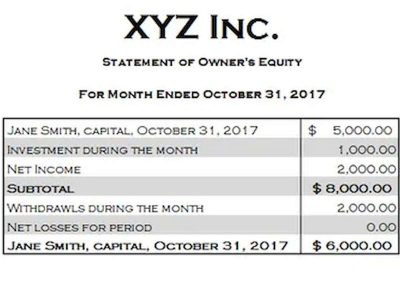
Negative retained earnings often arise from a company’s prolonged inability to generate a profit, which can be due to a variety of operational or external factors. For example, a business may experience a downturn in sales due to increased competition, leading to reduced revenue and, consequently, losses. Alternatively, operational inefficiencies, such as high production costs or wasteful spending, can erode profits over time, pushing retained earnings below zero. Retained earnings can typically be found on a company’s balance sheet in the shareholders’ equity section. Retained earnings are calculated through taking the beginning-period retained earnings, adding to the net income (or loss), and subtracting dividend payouts. The potential implications of a negative retained earnings balance depend on the severity and duration of the losses.

Valuation Matches Risk-Reward
Negative retained earnings can distort key financial ratios used to assess a company’s health. Return on equity (ROE), calculated as net income divided by shareholder’s equity, becomes misleading when negative retained earnings shrink equity values. As equity decreases, even modest profits may produce an inflated ROE, creating a skewed view of performance. Strategic decisions, such as aggressive expansion or acquisitions, can also contribute to negative retained earnings. While these moves may be made with long-term growth in mind, they can require substantial upfront investment, leading to short-term financial strain.
- If a company decides not to pay dividends, and instead keeps all of its profits for internal use, then the retained earnings balance increases by the full amount of net income, also called net profit.
- It’s vital to differentiate between these sources of earnings when assessing a company’s financial strategy and sustainability.
- If the company is just starting out, it’s not uncommon that operating costs and investments might outweigh net income.
- Retained earnings are also called earnings surplus and represent reserve money, which is available to company management for reinvesting back into the business.
- If a company is not generating enough profits to cover its expenses, it will eventually accumulate losses and end up with negative retained earnings.
- Negative retained earnings is a financial term that refers to a negative balance in a company’s retained earnings account.
Q. How can investors access a company’s Retained Earnings data?

It is essential for Company A to address these issues promptly to stabilize its financial health. Negative retained earnings contribute to a reduction in shareholders’ equity, impacting the company’s overall financial position and potentially signaling financial distress. Certified Public Accountant Retained earnings are the portion of income that a business keeps for internal operations rather than paying out to shareholders as dividends. Valuation AdjustmentsNegative retained earnings can affect a company’s valuation during an M&A transaction. Traditional methods, such as discounted cash flow (DCF), may need adjustments to account for the deficit.
Evaluating Feasibility Constraints in Business Operations
When acquiring negative retained earnings a company with an accumulated deficit, buyers must conduct thorough due diligence to uncover the underlying issues contributing to the deficit. This includes assessing operational efficiency, market position, and future profitability to ensure alignment with strategic goals. Implementing cost control measures and streamlining operations can stabilize cash flows. Revisiting pricing strategies or exploring new revenue streams may also enhance profitability and reduce the deficit over time. Investors should consider the broader economic environment and industry trends when analyzing a company with negative retained earnings. Sector downturns can exacerbate financial challenges, while favorable market conditions may provide opportunities for recovery.
Negative retained earnings can be a concerning issue for any company, as they indicate that it has consistently reported net losses over time. Relying solely on retained earnings to evaluate a company’s financial health can be misleading. Other financial metrics, such as liquidity ratios, debt levels, and profitability margins, should also be considered in conjunction with retained earnings for a comprehensive analysis. When a company generates net income, it is typically recorded as a credit to the retained earnings account, increasing the balance. In contrast, when a company suffers a net loss or pays dividends, the retained earnings account is debited, reducing the balance.

- This accumulation of retained earnings on a company’s balance sheet serves as a clear indicator of the organization’s financial health and stability.
- On the other hand, it could be indicative of a company that should consider paying more dividends to its shareholders.
- The level of retained earnings can guide businesses in making important investment decisions.
- Once your business pays all its taxes, expenses, and other debts owed each period – including your shareholders’ dividends, if applicable — the money left over is called retained earnings.
- It is possible for companies to have negative earnings and positive cash flow at the same time.
- If these strategies do not yield the expected returns quickly enough, they can result in a sustained period of negative earnings.
- The SmartBiz® Small Business Blog and other related communications from SmartBiz Loans® are intended to provide general information on relevant topics for managing small businesses.
They also offer a gauge for the amount of funds that have been reinvested into the company. Analysts and investors scrutinize this financial metric to assess the firm’s financial stability and growth potential. A consistent increase in retained earnings typically suggests a company with a strong profit-making ability, whereas a decrease could indicate potential trouble or a deliberate strategy of heavy investment. This situation tends to occur when a business consistently records net losses over an extended period. Net losses represent the company’s expenses and losses exceeding its revenues and income, leading to a decrease in overall retained earnings. It highlights the company’s current financial standing and raises concerns about its sustainability and long-term viability.


Your investment decisions should be justified by the valuations of the companies in which you invest. If the stock appears overvalued and there is a high Bookkeeping for Chiropractors degree of uncertainty about its business prospects, it may be a highly risky investment. In this case, the present value of cash flows is $198.61 million, and each share is worth $3.97. Tweaking the terminal value and the discount rate resulted in a share price that was almost a dollar or 20% lower than the initial estimate.
Leave a Reply